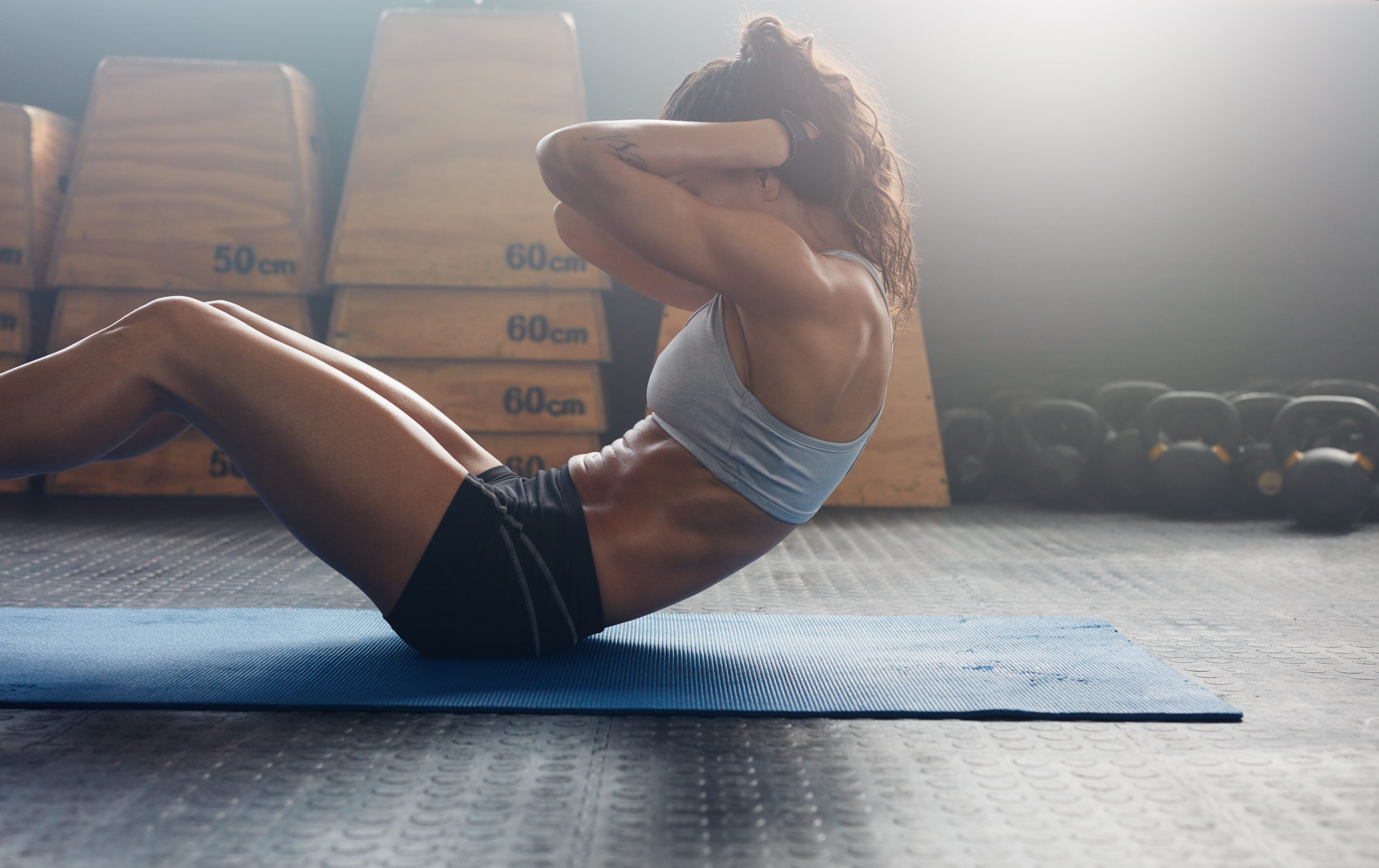Exercise & Fitness
What are some good aerobic exercises for my heart?
There are many aerobic exercises that can benefit your heart health. Here are some good options:
- Walking: Walking is a simple and accessible aerobic exercise that can be done almost anywhere. Aim for brisk walking to get your heart rate up.
- Running or jogging: Running or jogging can provide a more intense cardiovascular workout. Start slowly if you’re new to running and gradually increase your pace and distance.
- Cycling: Cycling, whether outdoors or on a stationary bike, is a great low-impact aerobic exercise that can improve your cardiovascular fitness.
- Swimming: Swimming is a full-body workout that is easy on the joints. It can improve your cardiovascular health while also strengthening muscles.
- Dancing: Dancing is a fun way to get your heart rate up and improve your cardiovascular fitness. It can also improve coordination and balance.
- Jumping rope: Jumping rope is a high-intensity aerobic exercise that can improve cardiovascular fitness, coordination, and agility.
- Aerobic classes: Joining an aerobic class, such as Zumba, step aerobics, or cardio kickboxing, can provide a fun and motivating way to improve your heart health.
- Hiking: Hiking is a great way to get outdoors and enjoy nature while also getting a good cardiovascular workout.
- Rowing: Rowing, either on a rowing machine or in a boat, is a full-body workout that can improve cardiovascular fitness and strength.
- Elliptical training: Using an elliptical machine provides a low-impact aerobic workout that can improve cardiovascular fitness and strengthen muscles.
It’s important to choose activities that you enjoy and that you can stick with in the long term. Aim for at least 150 minutes of moderate-intensity aerobic exercise per week, or 75 minutes of vigorous-intensity exercise, along with muscle-strengthening exercises on two or more days a week. Always consult with a healthcare provider before starting a new exercise program, especially if you have any health concerns.
What are some good strength training exercises?
Strength training is important for building and maintaining muscle mass, improving bone density, and enhancing overall strength and function. Here are some good strength training exercises that target different muscle groups:
- Bodyweight exercises:
- Push-ups: Target the chest, shoulders, and triceps.
- Squats: Target the quadriceps, hamstrings, and glutes.
- Lunges: Target the quadriceps, hamstrings, and glutes.
- Plank: Target the core muscles.
- Dumbbell exercises:
- Dumbbell bench press: Target the chest, shoulders, and triceps.
- Dumbbell rows: Target the back muscles.
- Dumbbell shoulder press: Target the shoulders and triceps.
- Dumbbell biceps curls: Target the biceps.
- Dumbbell triceps extensions: Target the triceps.
- Barbell exercises:
- Barbell squats: Target the quadriceps, hamstrings, and glutes.
- Deadlifts: Target the hamstrings, lower back, and glutes.
- Barbell bench press: Target the chest, shoulders, and triceps.
- Barbell rows: Target the back muscles.
- Barbell shoulder press: Target the shoulders and triceps.
- Kettlebell exercises:
- Kettlebell swings: Target the hips, glutes, hamstrings, and lower back.
- Kettlebell goblet squats: Target the quadriceps, hamstrings, and glutes.
- Kettlebell lunges: Target the quadriceps, hamstrings, and glutes.
- Resistance band exercises:
- Resistance band chest press: Target the chest, shoulders, and triceps.
- Resistance band rows: Target the back muscles.
- Resistance band shoulder press: Target the shoulders and triceps.
- Resistance band biceps curls: Target the biceps.
- Resistance band triceps extensions: Target the triceps.
- Machine exercises:
- Leg press machine: Target the quadriceps, hamstrings, and glutes.
- Lat pulldown machine: Target the back muscles.
- Chest press machine: Target the chest, shoulders, and triceps.
- Shoulder press machine: Target the shoulders and triceps.
- Leg curl machine: Target the hamstrings.
It’s important to start with light weights or resistance and gradually increase as you become stronger. Proper form is crucial to prevent injury, so consider working with a certified fitness trainer, especially if you’re new to strength training. Aim to incorporate strength training exercises into your routine at least two days per week, targeting all major muscle groups.
What are some good flexibility exercises?
Flexibility exercises are great for improving your range of motion and reducing the risk of injury. Here are some good flexibility exercises to try:
- Stretching: Stretching exercises like toe touches, shoulder stretches, and side stretches can help improve flexibility in various parts of the body.
- Yoga: Yoga poses like downward dog, child’s pose, and cobra pose are excellent for improving flexibility and overall body strength.
- Pilates: Pilates focuses on core strength, but it also helps improve flexibility, especially in the spine and hips.
- Tai Chi: This gentle form of martial arts combines slow, flowing movements with deep breathing, promoting flexibility, balance, and relaxation.
- Foam rolling: Using a foam roller to massage and stretch muscles can improve flexibility and reduce muscle tension.
- Dynamic stretches: These involve moving parts of your body and gradually increasing reach, speed of movement, or both, like leg swings or arm circles.
- Ballistic stretches: These involve bouncing or jerking movements to increase flexibility, but they can be risky if not done correctly and are not recommended for everyone.
Always warm up before stretching and listen to your body to avoid overstretching or causing injury.
What are some good balance and stability exercises?
Balance and stability exercises are important for improving coordination and preventing falls, especially as you age. Here are some good exercises to try:
- Single-leg stands: Stand on one leg for 30 seconds to 1 minute, then switch to the other leg. You can hold onto a chair or wall for support if needed.
- Balancing on a balance board or stability ball: These tools challenge your balance and stability as you try to maintain your position.
- Heel-to-toe walk: Walk in a straight line placing the heel of one foot directly in front of the toes of the other foot each time.
- Tai Chi: This martial art focuses on slow, controlled movements that improve balance, strength, and coordination.
- Yoga: Yoga poses like tree pose, warrior III, and half moon pose challenge balance and stability.
- Pilates: Pilates exercises like the hundred, shoulder bridge, and side leg lifts help improve core strength and stability.
- Bosu ball exercises: Using a Bosu ball (a half stability ball) for exercises like squats, lunges, and push-ups can improve balance and stability.
- Walking heel to toe: Practice walking with the heel of one foot touching the toes of the other foot with each step.
- Standing knee lifts: Lift your knee up towards your chest while standing on one leg, then switch legs.
- Sit-to-stand: From a seated position, stand up without using your hands, then sit back down slowly.
Always perform balance and stability exercises in a safe environment and use support or assistance as needed to prevent falls.
What are some good high-intensity interval training exercises?
High-intensity interval training (HIIT) involves alternating between short bursts of intense exercise and brief periods of rest or lower-intensity exercise. Here are some effective HIIT exercises:
- Sprinting: Sprinting for 30 seconds followed by 1 minute of walking or jogging.
- Jumping jacks: Perform jumping jacks as fast as you can for 30 seconds, then rest for 30 seconds.
- Burpees: Do as many burpees as you can in 30 seconds, then rest for 30 seconds.
- Mountain climbers: Alternate bringing each knee towards your chest quickly for 30 seconds, then rest for 30 seconds.
- Jump squats: Squat down, then explosively jump up as high as you can. Do as many as you can in 30 seconds, then rest for 30 seconds.
- Box jumps: Jump onto a box or sturdy platform, then step or jump back down. Do as many as you can in 30 seconds, then rest for 30 seconds.
- Jump rope: Jump rope as fast as you can for 30 seconds, then rest for 30 seconds.
- High knees: Run in place, bringing your knees up towards your chest as high as you can for 30 seconds, then rest for 30 seconds.
- Bicycle crunches: Lie on your back and pedal your legs in the air while alternating touching your elbows to opposite knees for 30 seconds, then rest for 30 seconds.
- Battle ropes: Alternate swinging battle ropes up and down as fast as you can for 30 seconds, then rest for 30 seconds.
Remember to warm up before starting your HIIT workout and cool down afterward. Start with shorter intervals if you’re new to HIIT and gradually increase the intensity and duration as you build endurance.
What are some good low-impact cardio exercises?
Low-impact cardio exercises are great for people looking to get their heart rate up without putting too much stress on their joints. Here are some good low-impact cardio exercises:
- Walking: Brisk walking is an excellent low-impact cardio exercise that can be done indoors or outdoors.
- Cycling: Stationary biking or outdoor biking on flat terrain is a great low-impact cardio option.
- Swimming: Swimming laps or water aerobics provide a full-body workout with minimal joint strain.
- Elliptical training: Using an elliptical machine at a moderate intensity can give you a good cardio workout with little impact on your joints.
- Rowing: Rowing machines provide a low-impact, full-body workout that is great for cardiovascular health.
- Dancing: Low-impact dance classes like salsa, ballroom, or Zumba can be a fun way to get your heart rate up.
- Stair climbing: Using a stair climber machine or climbing stairs at home or in a public space is a good low-impact cardio workout.
- Tai Chi: While not traditionally considered a cardio exercise, Tai Chi can improve cardiovascular fitness while being gentle on the joints.
- Yoga: Some yoga styles, like Vinyasa or Power Yoga, can provide a good cardiovascular workout without high-impact movements.
- Pilates: Pilates exercises can be modified to include more cardio-focused movements while remaining low-impact.
These exercises can be adjusted to your fitness level and goals, and they can be combined with strength training for a well-rounded fitness routine.




